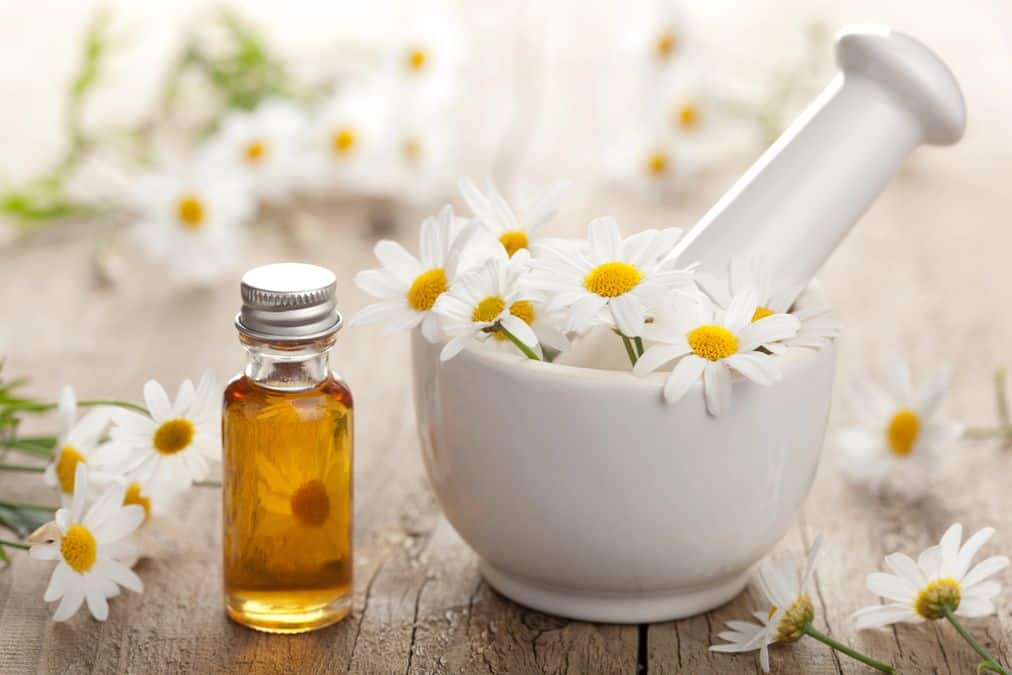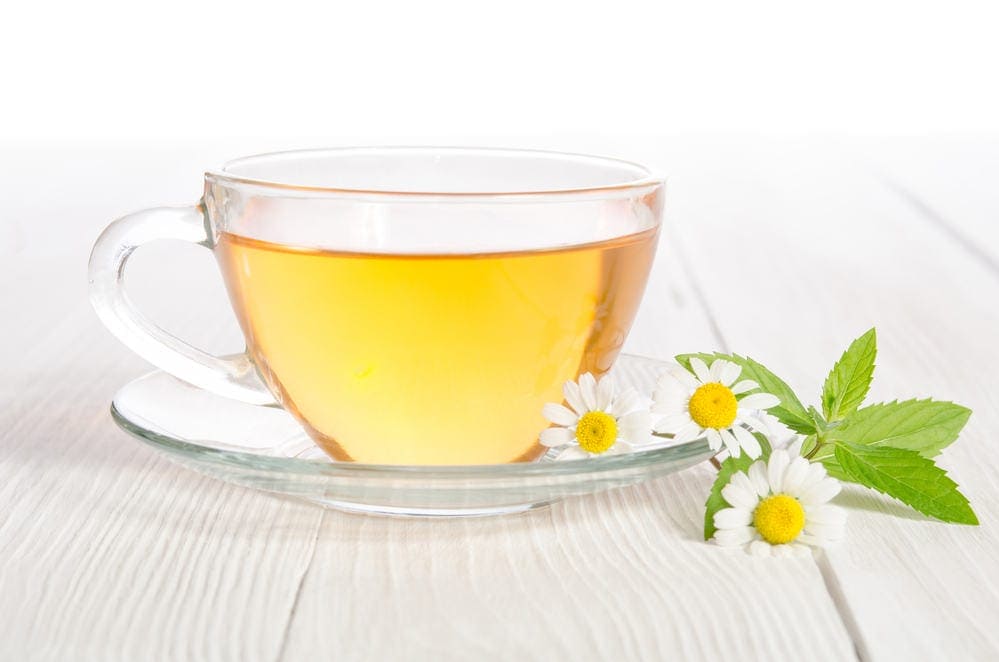
Common chamomile – medicinal properties worth knowing
One of the most popular varieties of natural medicine is certainly herbalism, also known as phytotherapy. It is currently celebrating real triumphs, and more and more people are turning to natural methods of alleviating the symptoms of various ailments. Herbs and other plants with known and proven properties are not only highly effective. In the vast majority of cases, they are at the same time devoid of unpleasant side effects that characterize popular pharmaceuticals. Such an herb finding wide application is certainly chamomile, with which it is worth getting acquainted a little closer.
Contents
- 1 Common chamomile – what is this plant?
- 2 Common chamomile – what active compounds can we find in its composition?
- 3 Common chamomile – what medicinal properties does it have?
- 4 Common chamomile – in what quantities is it allowed to consume it?
- 5 Common chamomile – which range of its use is worth emphasizing?
- 6 Common chamomile – is it used in cosmetics?
- 7 Common chamomile – which contraindications prevent its use?
Common chamomile – what is this plant?
Before we learn how chamomile itself and preparations with its additives affect the human body, we should get to know this interesting plant a little more closely. Common chamomile (Matricaria chamomilla) is an annual plant of the Asteraceae species, known practically all over Europe, also growing in Asia, North America and Australia. It can occur in the wild, and is also cultivated on an industrial scale for the medical and cosmetic industries.
As for its appearance, chamomile is easy to identify on its own, with a strongly branched, naked stem growing up to 50 cm high. The leaves of the plant are thread-shaped, sharply pointed, the flowering period is from May until September, and during this time the chamomile develops flowers gathered in characteristic yellow-white baskets. Another feature of this plant is the intense but very pleasant smell it emits. For herbal and cosmetic purposes, it is the flower heads that are used, which are full of nutrients beneficial to our health.
Common chamomile – what active compounds can we find in its composition?

As with other herbs, chamomile also owes its health-promoting effect to the content of a large number of diverse biologically active compounds. They have a significant impact on various organs, internal systems and the course of many important processes, especially metabolic.
At the same time, it should be noted that the use of chamomile as recommended and not exceeding its prescribed daily doses, is completely safe and does not usually cause any side effects. However, it is necessary to check beforehand whether there will be an individual allergic reaction to the plant itself or any of the substances in its composition.
Therefore, you should very carefully read the leaflets that come with chamomile herb, which you buy in a pharmacy or herbal store, and with dietary supplements in which it is one of the active substances. Chamomile contains the following components that positively affect human health:
- essential oil, which has in its composition such compounds as chamazulene with anti-inflammatory, antibacterial, antioxidant and skin irritation-soothing effects;
- flavonoids, also protecting the body against harmful microorganisms, also having an anti-allergic effect;
- Tannins, with effects similar to essential oil;
- phenolic acids, also removing excess free radicals;
- coumarin and mucilaginous compounds, with strong anti-inflammatory effects;
- phytosterols, essential for the heart and circulatory system, among other things, with anticancer effects, preventing, for example, uncontrolled growth of the prostate gland;
- vitamin B4, or choline, which belongs to the numerous group of vitamin B, essential for the proper work of almost the entire body, not only its physical side, but also its mental side;
- vitaminC, also known as ascorbic acid, another even essential for health, with broad healing properties, which should always be supplied in adequate daily doses;
- fatty acids;
- polysaccharides;
- numerous amino acids.
Common chamomile – what medicinal properties does it have?
There is no denying that such a rich chemical composition has a direct impact on all the properties and mode of action of common chamomile. Such can not boast of too many other herbs and plants used in phytotherapy, and the most important, also pointed out by experts in the field, are:
- anti-inflammatory;
- antibacterial;
- antifungal;
- weakening the negative effects of toxins;
- relaxing smooth muscles, primarily of the digestive system;
- improving intestinal peristalsis;
- facilitating digestive processes;
- calming, relaxing and alleviating the negative effects of stress;
- solving sleep problems;
- relieving other states of nervous tension;
- promoting the healing of wounds and skin irritations;
- counteracting cystitis and urinary tract inflammation;
Common chamomile – in what quantities is it allowed to consume it?
Despite its undoubted benefits, which cannot be ignored, the daily intake of chamomile herb, mostly drunk in the form of teas, should not be exaggerated. While there are no strictly defined amounts that can bring negative rather than positive effects, it is not recommended to exceed the dose of 3-5 cups of infusion per day.
Common chamomile – which range of its use is worth emphasizing?
Its wide-ranging health-promoting properties predispose the use of chamomile to help deal with the troublesome symptoms of various ailments. Some of the scope of its use is worth outlining in a little more detail, and it is definitely worth using for:
Ailments of the digestive system
Digestive and metabolic problems can have varied origins, but are most often the result of improper diet, a diet far from the recommendations of doctors and nutritionists. Therefore, it is always worth having chamomile herb in your home herbal medicine cabinet, and the infusion made from it will quickly relieve such ailments as indigestion, hyperacidity, flatulence, abdominal pain caused by gastric or duodenal ulcers, or painful colic.
The effects of stress and other nervous tension

Long-term effects of stress and nervous tensions can almost completely disrupt health, and not only mental, but also physical. Disorders of various systems in addition to the nervous, cardiovascular, urinary or digestive systems are possible, and chamomile can help here.
It is characterized by a calming, relaxing effect, allowing you to relax, forget about the problems of the day, calm down, soothe frazzled nerves, reduce the negative effects of stress. In addition, it can help you fall asleep, improve the quality of sleep and thus counteract insomnia.
Upper respiratory tract infections
The common cold, flu and other seasonal infections can pose a serious health risk if we do not react appropriately as soon as the first alarming symptoms appear. Particularly troublesome and troublesome to treat are infections of the upper respiratory tract manifested by cough, runny nose and, above all, a sore throat that is difficult to bear.
Here again, it is worth considering supporting treatment with common chamomile, which relieves the above-mentioned symptoms thanks to its anti-inflammatory and analgesic effects. In addition to this, it can help the healing process of irritated mucous membranes, and facilitates the expectoration of secretions lingering in the respiratory tract. This is facilitated by the presence in chamomile of such compounds as camphor, and it is best to use hot inhalations with the addition of a few drops of chamomile oil.
Infections and other urinary tract conditions
Another noteworthy use of common chamomile, is to help with infections, inflammation and other urinary tract conditions. This is facilitated by its antimicrobial properties, thanks to which it copes with many groups of bacteria responsible for the aforementioned problems. It alleviates the accompanying symptoms, pain and burning, and regular supplementation of chamomile improves the function of the kidneys and urinary tract, preventing the recurrence of symptoms.
Common chamomile – is it used in cosmetics?

The use of chamomile herb is not limited to phytotherapy, it is also widely used in cosmetics. This is influenced by its properties that allow faster regeneration of the skin, from the epidermis to its deepest layers. The health and appearance of our skin is also improved by its anti-inflammatory properties, thanks to which chamomile copes with the effects of irritation, ulcers, or acne lesions.
It also has a great effect antioxidant, it has long been known that one of the biggest enemies of our skin is excessive free radical activity, and the effects of oxidative stress can be seen on the skin almost immediately. That is why chamomile can be found in the composition of ointments, creams, serums, tonics and many other cosmetics for daily skin care. They will quickly remove any abnormalities of the skin, being suitable for practically any skin type, even very sensitive.
Chamomile is also used on the hair, and not only to lighten it slightly. Rinsing hair with chamomile infusion can stop excessive hair loss, at the same time strengthens weakened hair follicles and roots, improves blood supply to the scalp. Hair becomes stronger, less brittle and fragile, smoothed and regains its natural shine, and is stimulated to grow faster.
Common chamomile – which contraindications prevent its use?
The advantages of using common chamomile, also pointed out by specialists in various fields of medicine, are obvious and difficult to dispute. Unfortunately, not everyone can use it, and in addition to the individual allergic reaction, other equally important contraindications must be taken into account:
- pregnancy and lactation;
- age, and the use of chamomile in children should be consulted in advance with a doctor;
- skin prone to irritation and the occurrence of allergic lesions;
- possible interactions with certain groups of drugs, including those supporting the treatment of depression, which again is worth consulting a specialist;
- liver and intestinal diseases;
- certain cardiovascular diseases;
- vitamin deficiencies in the body;
- drinking large amounts of alcohol;
- diabetes, and chamomile can cause dangerous lowering of blood glucose levels;
- scheduled surgical procedures, chamomile must not be used at least two weeks before them, as it can interfere with proper blood clotting.
Sources:
- https://www.healthline.com/health/chamomile-oil
- https://www.healthline.com/health/pregnancy/chamomile-tea
- https://www.healthline.com/nutrition/5-benefits-of-chamomile-tea



